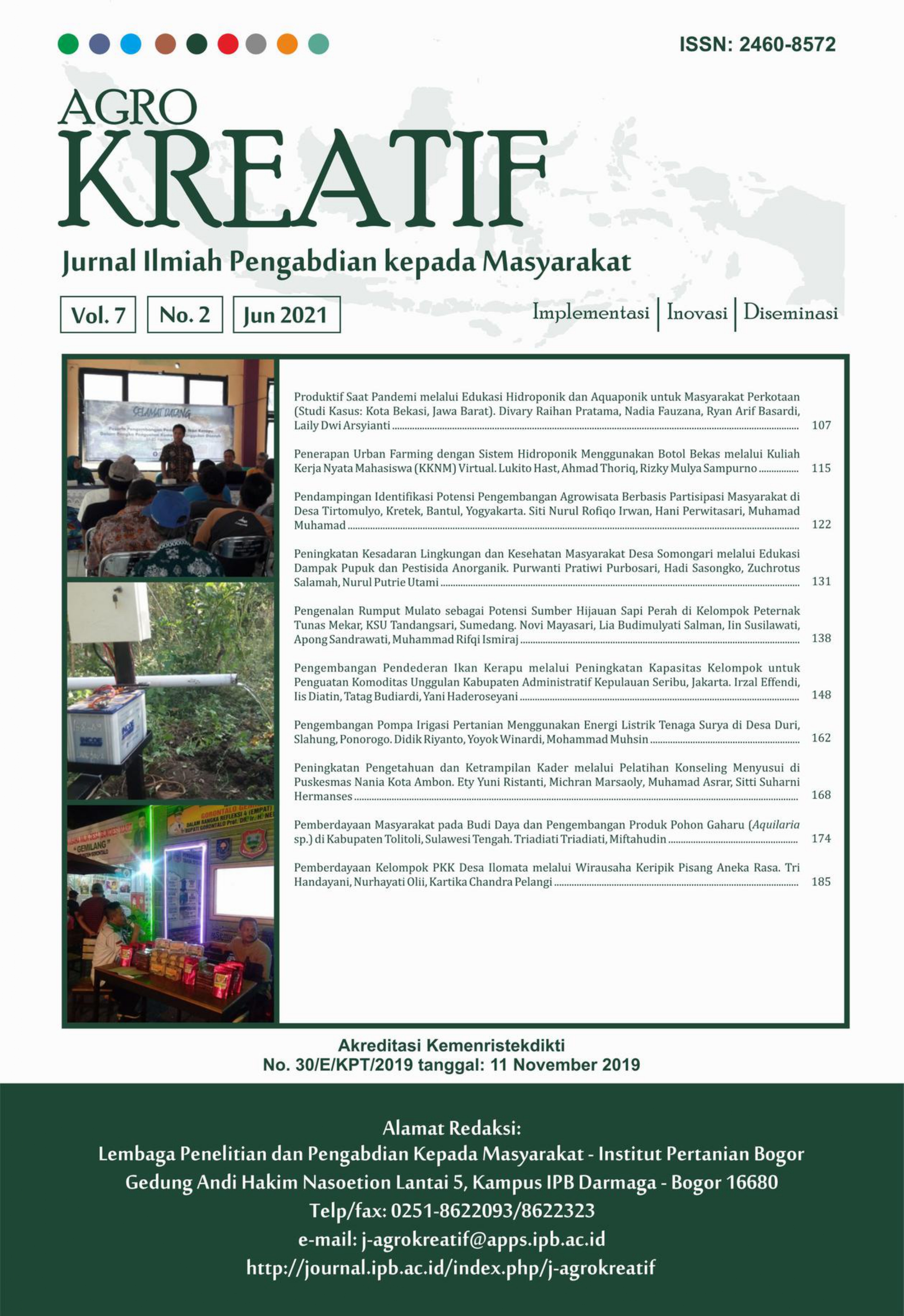Produktif Saat Pandemi melalui Edukasi Hidroponik dan Aquaponik untuk Masyarakat Perkotaan (Studi Kasus: Kota Bekasi, Jawa Barat)
Abstract
Indonesia is one of countries affected by the pandemic of Covid-19. All aspects of prevention and countermeasures have been carried out by various parties around the world regarding the pandemic that has occurred from March 2020 to the present. The agricultural sector is of concern because it has an important role and is closely related to national food security, as well as the supporting sector to strengthen Indonesia economy, particularly in such condition. Agriculture also can offer a solution to avoid food crises. One of the activities is to diversify food and not rely entirely on the amount of food in the market. This activity attempts to utilized limited area available in the city, thus it becomes more productive especially during pandemic. The hydroponic and aquaponic system of agricultural cultivation technology provides an alternative to be used as an adequate source of income and can meet family food needs. This technique can be carried out by people who live both in rural and urban areas which is not required a wide space. This activity can strengthen family food security as well as become additional income or even the main income of the family.
Downloads
References
Hochman, G., Hochman, E., Naveh, N., & Zilberman, D. 2018. The synergy between aquaculture and hydroponics technologies: The case of lettuce and tilapia. Sustainability, 10(10), 3479.
Mahela dan Sutanto. 2006. Kajian Konsep Ketahanan Pangan dalam Jurnal Protein Vol. 13 No. 2 Tahun 2006. Jakarta
Perwitasari DA, Amani T. 2019. Penerapan sistem akuaponik (budidaya ikan dalam ember) untuk pemenuhan gizi dalam mencegah stunting di Desa Gending Kabupaten Probolinggo. Abdi Panca Marga. 1(1): 20-24.
Poznickova, D. (2019). Hydroponic farming and circular economy: Implementation of circular economy into hydroponic production. Master Thesis in Business Administration, Department of Economics, Swedish University of Agricultural Sciences.
Ramadayanti, E. 2020. Covid-19 dalam Perspektif One Health Approach dan Law Enforcement. http://fh.unpad.ac.id/covid-19-dalam-perspektif-one-healthapproach-dan-law- enforcement/#_ftn4. Diakses pada 1 Sep 2020.
Romeo, D., Vea, E. B., & Thomsen, M. (2018). Environmental impacts of urban hydroponics in Europe: a case study in Lyon. Procedia CIRP, 69, 540-545.
Susetya IE, Harahap ZA. 2018. Aplikasi budikdamber (budidaya ikan dalam ember) untuk keterbatasan lahan budidaya di Kota Medan. ABDIMAS TALENTA. 3(2): 416-420.
Tim karya tani mandiri, 2010. Pedoman Budidaya Secara Hidroponik. Nuansa Aulia. Bandung.
Uddin, M. T., & Dhar, A. R. 2018. Socioeconomic analysis of hydroponic fodder production in selected areas of Bangladesh: Prospects and challenges. SAARC Journal of Agriculture, 16(1), 233-247.
World Health Organization (WHO). 2020. WHO Coronavirus Disease (COVID19) Dashboard. https://covid19.who.int/. Diakses pada 19 Mei 2020.
This work is licensed under a Creative Commons Attribution-NonCommercial 4.0 International License.



















